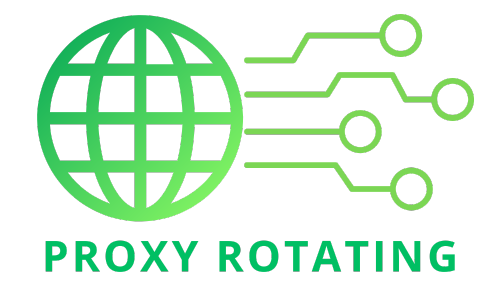Blockchain technology is revolutionizing industries with its secure, transparent ledgers. The emergence of quantum computing, however, presents new challenges and opportunities. This Proxy Rotating article explores how quantum computing could threaten blockchain security and how the blockchain community responds with quantum-resistant cryptography. Join us for an insightful look into the future of blockchain quantum computing.
What is quantum computing– and how is it different from blockchain?
Quantum computing and blockchain are two technological concepts often discussed in the context of the future of computing and security. Yet, they operate on fundamentally different principles and serve various purposes.
What is Quantum Computing?
Quantum computing is a type of computing that uses quantum-mechanical phenomena, such as superposition and entanglement, to perform operations on data. Unlike classical computers, which use bits as the smallest unit of data (each bit being a 1 or a 0), quantum computers use quantum bits, or qubits, which can exist in multiple states simultaneously. This allows them to process many possibilities simultaneously, making them capable of solving complex problems much faster than classical computers.
The critical characteristics of quantum computing include:
- Parallelism: With superposition, quantum computers can handle more data than classical computers.
- Speed: Certain algorithms, like integer factorization (Shor’s algorithm) and database search (Grover’s algorithm), can theoretically run much faster on quantum machines.
- Specialization: Quantum computers are not meant to perform all computing tasks but are exceptionally well-suited for specific types, such as cryptography and modeling molecular structures.

What is Blockchain?
Blockchain is a decentralized digital ledger technology best known for supporting cryptocurrencies like Bitcoin. It consists of a chain of blocks, each containing transaction data, a timestamp, and a cryptographic hash of the previous block. This structure ensures the integrity and honesty of the data recorded on the blockchain, making it tamper-evident and secure against fraud.
The key characteristics of blockchain include:
- Decentralization: Unlike traditional ledgers, a blockchain does not rely on a central authority to validate transactions; instead, it uses a consensus mechanism among a network of nodes.
- Transparency: All transactions are visible to anyone with access to the network, ensuring transparency.
- Security: The cryptographic connection between consecutive blocks makes the blockchain resistant to tampering and revision.

Key differences
- Purpose and application: Quantum computing is focused on enhancing computational speed and solving complex problems, while blockchain is aimed at creating a secure, transparent, and decentralized ledger system.
- Technology foundations: Quantum computing is based on principles of quantum physics, whereas blockchain is rooted in cryptography and network theory.
- Impact on each other: Interestingly, while quantum computing poses a potential threat to the cryptographic algorithms that secure blockchain, it could also lead to new, quantum-resistant cryptographic methods that could fortify blockchain security further.
In summary, quantum computing and blockchain are distinct in their technology, objectives, and potential applications. Quantum computing changes how we compute information in the future, whereas blockchain changes how we record and share information securely.
The connection between blockchain quantum computing
Blockchain Technology relies on cryptographic algorithms for its security, creating a tamper-proof decentralized ledger under current computational standards. This technology forms the backbone of cryptocurrencies and various secure transaction systems.
Quantum Computing, leveraging quantum mechanics, operates at speeds beyond what traditional computers can achieve. It uses qubits that can exist in multiple states simultaneously, enabling it to solve complex problems more efficiently.
Leveraging quantum algorithms could improve the speed of consensus mechanisms within blockchain quantum computing. This could resolve some of the most pressing scalability issues faced by networks like Bitcoin, including high energy consumption and slow transaction speeds. This advancement could revolutionize how transactions are verified and add new blocks, offering a solution to the current limitations of blockchain quantum computing.

On the other hand, the advent of quantum computing poses a formidable challenge to the security foundations of blockchain. Cryptographic algorithms such as RSA and ECC (Elliptic Curve Cryptography), currently secure against classical computing attacks, could be vulnerable to quantum computers. Algorithms like Shor’s algorithm, capable of efficiently factorizing the large prime numbers integral to public key cryptography, could decrypt secure transactions, threatening the essence of blockchain quantum computing security.
The development of quantum-resistant or post-quantum cryptography, aimed at creating cryptographic systems secure against both classical and quantum attacks, is crucial for ensuring the future security of blockchain technologies. As the field of quantum computing advances, the race to implement these quantum-resistant cryptographic techniques will be vital to maintaining the integrity and security of blockchain networks, marking a pivotal moment in the ongoing evolution of these technologies.
The influence of quantum computing on blockchain technology
Quantum computing presents a double-edged sword for blockchain technology. It offers exciting possibilities for improvement but also introduces new challenges.
Positive:
- Boosting efficiency: Quantum computers’ immense power could significantly speed up blockchain networks. This would allow them to handle more transactions faster, making them more scalable and applicable in more expansive areas.
- Strengthening security: Quantum computing could also lead to more secure blockchain systems. New, quantum-resistant encryption algorithms are being developed to protect against current threats and future quantum-based attacks, making blockchain an even more trustworthy platform.
- Unlocking new applications: The unique capabilities of quantum computers could open doors for entirely new blockchain applications. Currently, intractable problems for classical computers could become solvable, paving the way for more complex smart contracts, advanced supply chain solutions, and innovative ways to interact with the digital and physical worlds.
Negative:
- Threat to existing encryption: The power of quantum computing could break the encryption algorithms currently securing blockchain networks. Algorithms like Shor’s could crack RSA and ECC methods, creating vulnerabilities and jeopardizing trust in the technology.
- Need for new security solutions: To counter this threat, the blockchain community needs to develop and implement new, quantum-resistant security solutions. This requires significant investment in research and collaboration between the cybersecurity and blockchain industries.
- Centralization risks: Quantum computing’s immense processing power could lead to centralization, as only a few wealthy entities can afford it. This could undermine the decentralized nature of blockchain, a core principle of its design. Finding ways to keep blockchain accessible and decentralized in the face of quantum advancements is a crucial challenge.

Will quantum computing break blockchains and end cryptocurrency?
Quantum computing holds the potential to challenge the cryptographic foundations that secure many technologies, including blockchain and cryptocurrencies. However, whether it will “break” these technologies and end cryptocurrency is not a straightforward answer.
How Quantum Computing Could Impact Blockchain and Cryptocurrency:
- Cryptographic vulnerability: Most current blockchain technologies use cryptographic techniques such as public key cryptography for securing transactions and generating digital signatures. Quantum computers could theoretically break these systems through advanced algorithms like Shor’s algorithm, which can factorize large numbers (an underlying principle in most public key cryptography) exponentially faster than classical computers.
- Scale and feasibility: While quantum computers theoretically can break current cryptographic systems, their practical implementation is still a significant challenge. They would need enough quantum bits (qubits) to outperform today’s best classical computers, and maintaining the stability of these qubits is a complex task due to quantum decoherence and error rates.
- Quantum-resistant cryptography: The potential threat of quantum computers has led to the development of quantum-resistant or post-quantum cryptographic algorithms. These algorithms are designed to be secure against quantum and classical computers and are being developed and tested. The transition to quantum-resistant cryptography could mitigate the risks of quantum computing to blockchain technologies.
Future outlook:
- Transition period: As quantum technology evolves, there could be a transition period during which both quantum-vulnerable and quantum-resistant systems coexist. This period would be critical for blockchains and cryptocurrencies to adapt to new cryptographic standards.
- Regulatory and development response: How quickly and effectively the blockchain and cryptocurrency communities can respond to these challenges by adopting new standards will play a crucial role in their future viability.
- Innovation and adaptation: Blockchain technology is inherently adaptable, and its decentralized nature could facilitate a relatively swift consensus on integrating new cryptographic methods.
In conclusion, while quantum computing presents a theoretical threat to the cryptographic security of blockchain and cryptocurrencies, the actual impact will depend on the pace of quantum advancements and the adaptive measures taken by the blockchain community. The end of cryptocurrencies due to quantum computing is not imminent, but it is a call to action for preparing secure systems resilient against the quantum future.

Blockchain security solutions in the quantum computing era
Blockchain security solutions focus on developing quantum-resistant cryptographic algorithms in the quantum computing era. This includes transitioning to post-quantum cryptography (PQC), which involves cryptographic protocols that are believed to be secure against an attack by a quantum computer.
Additionally, there’s a growing interest in quantum key distribution (QKD), which uses quantum mechanics to securely distribute encryption keys, and blockchain quantum computing, which integrates quantum cryptography into the blockchain for enhanced security.
The goal is to ensure that blockchain quantum computing technology remains secure and viable even as quantum computing becomes more advanced and widespread. Researchers are actively analyzing the timeline for these threats to become significant and assessing the level of threat posed, given the proposed countermeasures.

The future of blockchain quantum computing
The future of blockchain quantum computing is poised to be a transformative intersection in technology. Quantum computing could revolutionize blockchain by exponentially increasing processing capabilities and enhancing security protocols through advanced encryption. However, it also presents significant challenges, as quantum computers have the potential to break current cryptographic defenses of blockchain technology.
Researchers and developers are working on post-quantum cryptography to address these challenges to create quantum-resistant blockchain systems. This involves designing secure algorithms against the computational power of quantum computers1. Moreover, integrating quantum computing with blockchain could lead to new applications in various fields, from finance to supply chain management, that are impossible with classical computing alone.
As this technology continues to develop, it will be crucial for the blockchain community to stay ahead of the curve in terms of security and explore the new possibilities that quantum computing brings to the table5. The synergy between these two technologies may well define the next digital infrastructure and security era.
How can blockchain infrastructure for quantum computers be upgraded?
- Understand quantum threats: Recognize the potential risks quantum computing poses to current cryptographic methods used in blockchain.
- Research Post-Quantum Cryptography (PQC): Explore cryptographic algorithms designed to be secure against quantum attacks.
- Implement quantum-resistant algorithms: Start integrating PQC algorithms into your blockchain infrastructure to protect against future quantum threats.
- Quantum Key Distribution (QKD): Consider using QKD for secure key management, a quantum-proof method of distributing encryption keys.
- Stay Informed on quantum advances: Follow the latest developments in quantum computing to anticipate changes and adapt your blockchain infrastructure accordingly.
- Collaborate and test: Work with the quantum computing and blockchain communities to test new quantum-resistant technologies and share best practices.
- Transition plan: Develop a roadmap for gradually transitioning your blockchain systems to quantum-resistant protocols to avoid disruption.
- Educate your team: Ensure that your team is knowledgeable about quantum computing and its implications for blockchain security.
- Regular security audits: Conduct regular security audits to assess the effectiveness of your quantum-resistant measures and make necessary adjustments.
The intersection of blockchain quantum computing presents a fascinating frontier, with possibilities for enhanced security, efficiency, and entirely new applications. While challenges exist, particularly regarding the need for quantum-resistant cryptography, ongoing research and development are crucial to unlocking this potential.
Through continued collaboration between the blockchain and cybersecurity communities, we can ensure a future where blockchain thrives in the quantum age, fostering a more secure and innovative digital landscape for all. To delve deeper into optimizing your internet experience and exploring advanced connectivity solutions, consider visiting the website Proxy Rotating.
>>> See more:
Blockchain security assessment
Blockchain security testing checklist
Blockchain security testing tools
